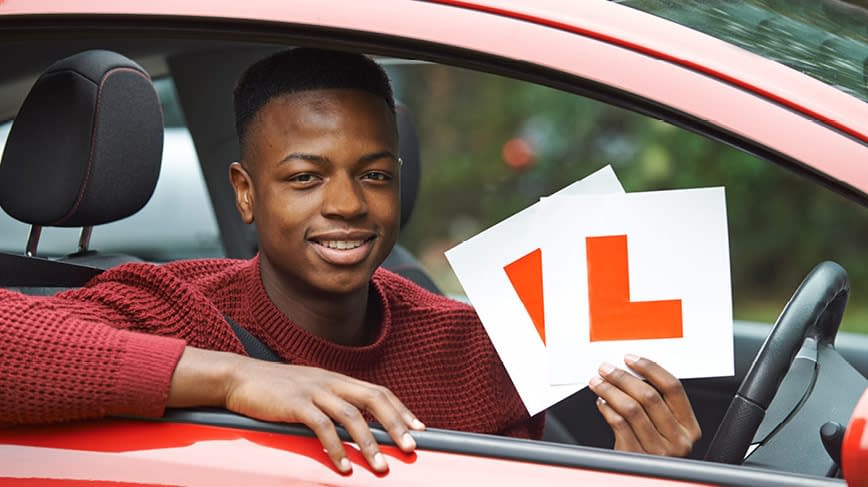How to Pass the Irish Driving Test?

By The Headlines, March 25, 2023 | 09:02 AM
After a successful theory test, the next step is to work towards passing the Practical Driving Test. This will be your final hurdle before you can get out on the road.
Acquiring an Irish provisional licence is the initial step towards obtaining a full one. It's natural to be apprehensive about taking the driving test, however, with adequate preparation and enough practice, you can definitely pass it.
To help you successfully pass your Irish driving test, we've compiled a list of the best driving test tips. Follow these recommendations and you'll be well-prepared to get your driver's license.
1. It is essential to read and understand the rules of the road guidebook from the RSA.
The book can be purchased from a local bookstore or downloaded for free from RSA.ie. Additionally, you will have to answer theory-based questions during the exam.
Before your practical test, it is important to be aware of Grade 1, Grade 2 and Grade 3 offences. Make sure to keep this information in mind while you are learning too.
You can quickly download the official learning app from here to learn essential topics like road signs and driver hand signals. It is a great resource for gaining knowledge about the driving industry.
2. Completing Driving Lessons and Pre-Tests
Completing the 12 EDT lessons is a great start, but it is advisable to take additional driving lessons for better safety and increased confidence. While this may not be legally mandated, it is beneficial in the long run.
Proper practice is essential to passing driving tests and boosting your confidence. Make sure to devote time to completing multiple lessons, as this can help you overcome any weaknesses, like reversing around a corner. If practised regularly, these skills can drastically reduce the chance of failing a test.
Pre-tests are a great way to prepare for your driving test. They help you familiarize yourself with the exam route, practice answering theory questions and get an idea of what the actual driving test will be like. They are basically a simulated version of the real test.
3. Good Preparation is a must
Reduce unnecessary anxiety on your test day by preparing the necessary paperwork and inspecting your vehicle beforehand. Ensure that all documents are in order, arrive at the centre prior to the test, and take a few minutes to mentally prepare yourself.
Reversing into your designated parking space at the test centre is recommended. This way you won't have to start off your driving test by reversing, and you can exit the lot more conveniently.
Prioritizing familiarization with the test route is invaluable in building confidence before taking it.
4. Confidence, focus and calmness
Remind yourself that you have done all the hard work necessary to pass your driving test and that you are an able driver. Don't be overwhelmed by the pressure and take deep breaths if the situation becomes too stressful.
Taking deep, slow breaths helps the body lower its stress hormones and relax. It's important to be aware of other drivers' movements on the road - not everyone is as careful as you, so some may start driving without signalling first.
Maintaining full focus on the test will help you anticipate potential dangers early and take preventive measures. Paying attention to indicators can equip you with the knowledge needed to accurately predict other vehicles' move before it occurs.
Drivers with a full licence usually have access to cheaper car insurance rates.
Read More: Diesel and petrol cars sale will be phased out across Europe by 2035
5. Play safe: distances and correct positioning
It is imperative to abide by the 2-second rule while driving. Create at least 2 seconds of gap between your car and the one in front. When travelling at 30km/h, make sure to maintain a distance of 4 car lengths for a safe halt.
Exercise caution while driving in the rain and maintain a safe distance from parked cars. Ensure that you are keeping at least a 'door width' of clearance while driving.
When driving near cyclists, always maintain a minimum safe distance of 1m when travelling at less than 50km/h and 1.5m when travelling faster.
Positioning your vehicle correctly on the road is essential for road safety. When turning left, don't take a wide turn and when turning right, avoid cutting corners. Furthermore, be sure to start your turn in good time to ensure you do not go too far ahead.
6. Good observation
Make sure to be very careful when on the road so that you don't miss any road signs, such as stop signs, yield signs and red lights. Not following these could cause you to fail the test. Utilize your driver theory test app to brush up on your knowledge of road signs before taking the test. Additionally, drive slowly at intersections and roundabouts as well as straight roads.
Always remember to adjust your driving according to changing conditions, including the weather, road and traffic. Additionally, never exceed the speed limit.
7. Don’t coast on your clutch
Coasting while driving is hazardous and can lead to a failed driving test. It is a practice of keeping the clutch depressed so that you're free-wheeling and not using the engine to move your car. Although this is easily preventable, many drivers still fall prey to it. Therefore, extra caution must be taken to avoid this common mistake.
8. Special attention to roundabouts, junctions and proper progression
Inexperienced drivers may find it difficult to navigate roundabouts. To make it easier for them, reading the Roundabouts section in the Rules of The Road book is highly recommended as it contains useful tips like picturing roundabouts as clocks. Ensure you drive in a progressive manner at roundabouts, junctions, on straight roads, and when passing other cars.
9. Don’t abide by your mistakes
It's important not to panic if you make a mistake during your test. Just move on and keep going; the mistake may not be as bad as you believed. Don't let it stop you from completing the exam. Catastrophic thinking, which is looking for the worst-case scenarios in every situation, can significantly heighten feelings of worry and panic. If you're overwhelmed, take a few deep breaths to help you relax and ease your mind.
Image credit: rsa.ie








